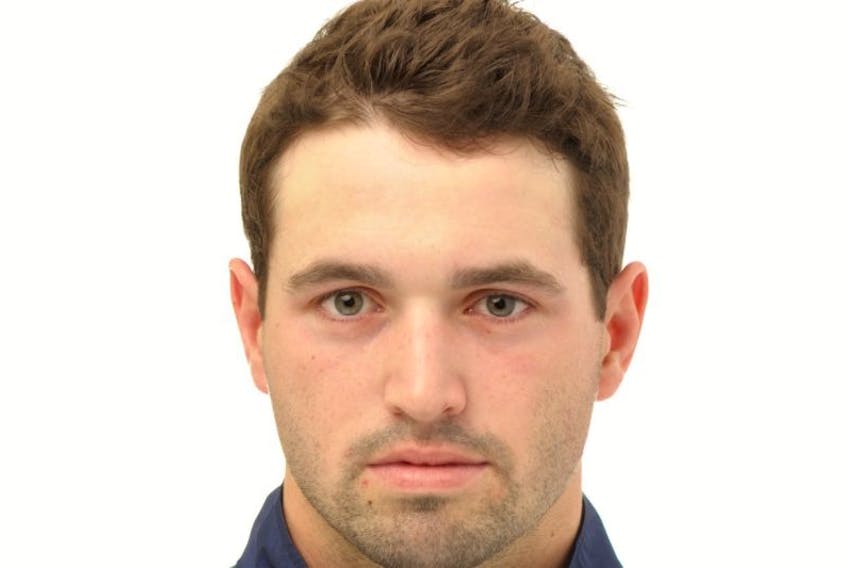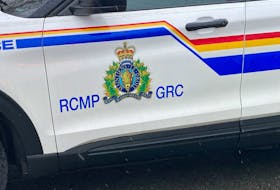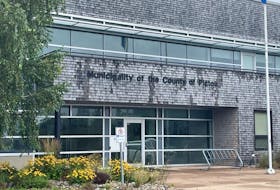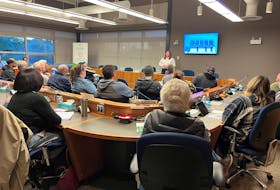Instead of relaxing, he ended up helping to rescue a woman trapped in her car.
Instead of relaxing, he ended up helping to rescue a woman trapped in her car.
“I figured I would leave the hotel, go out and get fresh air,” he said.
Before every game, the StFX X-Men usually go to Tim Hortons, and Turnbull decided to leave ahead of the team, walking to a restaurant in Fredericton, where the 2017 U SPORTS Cavendish Farms University Cup was taking place.
“I was sitting in Tim Hortons getting coffee when I heard a big bang. A car ran into parked truck,” he said.
Initially thinking it was a fender-bender, he didn’t pay much attention until he looked more closely and noticed the wheels on the car still turning and a cloud of smoke coming from the engine.
“I knew something was wrong and I saw people starting to panic outside,” he said.
He rushed out to help, finding the driver unresponsive at the wheel. Because of possible danger, bystanders decided to get the woman to safety, and Turnbull smashed the car window and unlocked the door.
Someone else removed her from the vehicle and another person performed CPR until an ambulance arrived.
As Turnbull was breaking the window, his teammates came upon the incident, and they tried to find a defibrillator at stores nearby.
The third-year forensic psychology student said the entire situation was scary. “I was pretty shaken up before the game, but with the help of my coaches, I tried to play hockey and forget about it.”
Unfortunately, the game didn’t go too well, with the team losing to the Saskatchewan Huskies.
Turnbull said he offered his assistance because if someone he knew was in that situation, he would want others helping them. “I’m glad I was there to help.”
Lib Mendonça, program development officer with St. John Ambulance, said in the first few minutes before professional help can arrive, a willing bystander is crucial in helping an injured or ill person. He noted that first aid training can give an individual the basic skills and confidence.
“Usually you don’t want to move a casualty for fear of aggravating injuries, but if there was a fire hazard, then removing her quickly was the best thing to do.”
He said at a motor vehicle collision, the vehicle’s ignition should be turned off, and to prevent fires, ensure there’s no fuel leak. A call to 911 should be made as soon as possible.
Kyle Mohler, a firefighter, paramedic and Red Cross first aid and CPR instructor in Halifax, said a person who is unresponsive lacks the ability to protect their own airway, which can be immediately life threatening.
He said it was a good idea to look for an automated external defibrillator – a portable electronic device that automatically diagnoses life-threatening cardiac arrhythmias, and is able to treat them through defibrillation. He said this can mean a difference in saving a person's life while waiting for an ambulance. “Outstanding job by all involved.”
Mohler said it’s possible that the woman suffered from a heart attack and subsequently stopped breathing, which caused the crash. “For that reason, it is always wise to summon for an AED.”
He said an unresponsive person may or may not be breathing appropriately, so it’s imperative that any person who is unresponsive be accessed if it’s safe, extricated and assessed for life status. “Establishing and maintaining airway, breathing and circulation takes priority over all else.”
If bystanders come across a motor vehicle accident, they should:
• Check the scene for safety. Only proceed if safe to do so.
• Check the person for responsiveness. If responsive and not in danger, the person can be left in position found.
• Check the person's life status. This can be accomplished simply by engaging the person in conversation if awake, but will often entail moving a person who is unresponsive.
• 911 should be called and an AED sought at the earliest possible convenience.
Source: Kyle Mohler, a trained firefighter and paramedic who owns/operates Lifeshield, a company that provides Canadian Red Cross first aid and CPR courses to the public.









